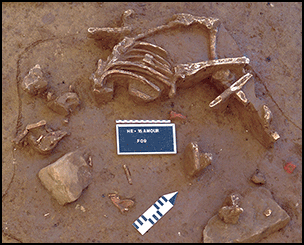Published online by Cambridge University Press: 23 November 2020

Many exotic animal species were introduced to Northern Europe during the Roman period, including fallow deer (Dama dama). To date, however, finds of fallow deer bones at archaeological sites in this region have been sporadic and disarticulated, leaving uncertainty over their origins. This article presents the first known articulated fallow deer skeleton from Roman North-western Europe. Osteological, ancient DNA, radiocarbon dating and stable isotope analyses confirm that the species was established in this region by the Roman period, probably originating from translocated, rather than native, Mediterranean populations. Clarifying the origins of fallow deer in North-western Europe is critical for understanding the dynamics of species exchange around the Roman Empire.